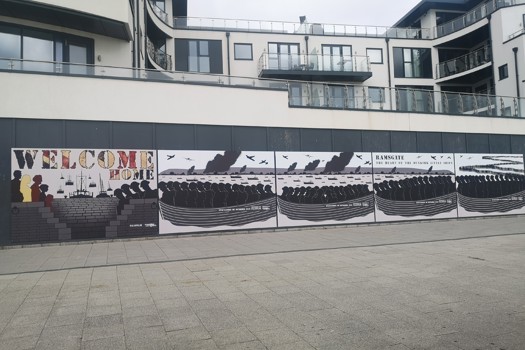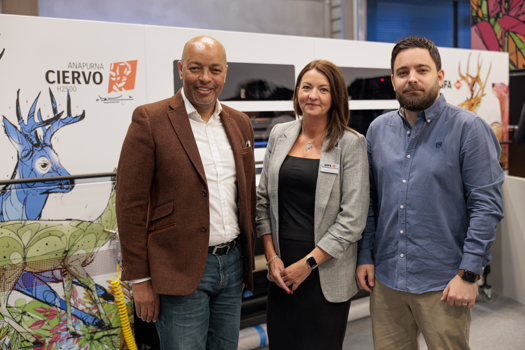General secretary Len McCluskey was due to step down in 2018 but resigned late last year, triggering a snap election in which he is campaigning for a third five-year term at the top of the Unite pole.
The election is being seen as a battle over Unite’s relationship with the Labour Party. McCluskey is close to Jeremy Corbyn and John McDonnell, whereas his main rival Gerard Coyne, Unite’s Midlands regional secretary, is looking to distance the union from party affiliation.
The ballot opens on 27 March and results will be out by 23 April.
Since 2014, print has been looked after by the Graphical, Paper, Media and Information, Technology & Communications (GPMITC) division of Unite, led by national officer Ian Tonks.
The division, which represents around 50,000 workers, has seen many changes over the past few years, after what used to be Amicus merged with the Transport & General Workers Union (TGWU) to form Unite in 2007. But has it remained relevant?
“I think we are just as relevant now as we ever have been, but probably in some cases more relevant – it depends what we are discussing,” says Tonks.
“If we’re talking training then unions are more relevant. [Training] used to be automatic, whereas over the years it has dropped down the agenda and these days through our work with the BPIF, Unite is absolutely relevant.”
Unite is working together with the BPIF on the Trailblazer initiative, looking to improve the quality of apprenticeships and give employers more of a say in how they are run.
“They’ve got a strong view about engagement in Europe, which we agree with, so from that point of view they have an active role to play and we have a constructive relationship with them,” says BPIF chief executive Charles Jarrold.
Difficult times
There was a tricky period not so long ago, however, when the BPIF ended the Partnership at Work agreement, hailed by the then Department of Trade and Industry upon its 2005 initiation as a model that other industry sectors should adopt.
The partnership set standards for training, but Jarrold, who at the time chaired the committee that ultimately dissolved the partnership, explains that demands for a minimum wage proved its undoing.
“It was seen as a straitjacket for the industry,” he says.
“That was a harsh interpretation but given the history, there was a real perception that national wage agreements were stopping commercial organisations making the changes they really needed to make.”
Louisa Bull, the GPMITC sector’s lead London officer, believes representation shifted after the partnership was dissolved.
She says: “85% of print companies have fewer than 20 employees and SME members would only have enjoyed agreements within the national agreement, unlike bigger companies where we had standalone agreements and have kept up our relationships. A lot of these SMEs have fallen away and merged; a lot have gone out of business.”
Yet on old-school industrial relations, Tonks points to Polestar as an example of when Unite stepped in and fought for the workforce.
“I asked PricewaterhouseCoopers [Polestar administrators] at the very first meeting we had in London to please not take out my representatives because you will lose a big opportunity,” he says.
“Had it not been for our Fathers of Chapel (FoC) in certain parts of Polestar, they would have been unable to run the machinery that they needed to run that week.”
Polestar sites such as Chantry, where Unite’s FoCs were not made redundant, were rescued from administration, whereas in Sheffield, where the opposite was the case, the plant was closed down.
Bull was instrumental in pushing for Unite’s GPM sector to combine with the ITC sector in 2014, believing that together the two sectors could lead the charge against one of the biggest challenges facing the labour market in the near future: industrial automation.
The division is planning a conference in May looking at automation, robotics and 3D printing, and Bull and others have been speaking to unions across Europe on the topic.
“There is a new sense that our relationships have not been with the Canons and HPs of this world, it’s been more with litho or gravure printers. So we are trying to move into building relationships with the manufacturers and getting an understanding of how they train and skill up,” she says.
“We are making our members fit for purpose. Skilling up the workforce with IT skills, using experience of the IT sector to inform our print sector and using Unite as a kind of umbrella.”
At a time when the industry is in flux, the unions are doing all they can to keep up and stay relevant. Now that relations with the BPIF are back on track, it seems that the best way forward is two-pronged: play a strong hand in Polestar-esque situations while simultaneously keeping the finger on the pulse of technological development.
UNIONS TIMELINE
Who has represented the printers over the past 50 years?
1966–1991 Society of Graphical and Allied Trades: SOGAT was formed in 1966 and was led between 1985 and 1991 by Brenda Dean, this year’s honorary president of The Printing Charity, before it merged with the National Graphical Association (NGA).
1991-2005 Graphical, Paper & Media Union (GPMU): SOGAT and the NGA merged to form the GPMU, which claimed on its inception to be the world’s largest media union, with around 200,000 members.
2005-2007 Amicus: Facing declining membership, the GPMU merged with manufacturing and white-collar union Amicus in early 2005.
2007-2017 Unite the Union: A further merger brought Amicus together with the Transport and General Workers Union (TGWU) to form Unite, which has around 1.4 million members. Print was first looked after by the Graphical, Paper & Media arm (GPM) but that merged in 2014 with the Information, Technology & Communication (ICT) sector. Today, it represents about 50,000 workers.
OPINION
Unions serve a vital purpose in a changing landscape
 Tony Burke, assistant general secretary, Unite
Tony Burke, assistant general secretary, Unite
Unions are still as relevant as we ever were; we are an important part of the printing, papermaking and media industry.
The industry is going through a massive change – printing in particular. The SME printers that were always there have been displaced by digital technology. We’re seeing more magazines and newspapers going ‘digital first’ but the printed editions are far from dead.
The requirements for customers of commercial printing have shifted significantly because of digital technology but there are parts of print where union membership is still very high and it’s those areas, such as packaging for instance, which are still very important to the industry.
Vital support
People who are members of our union get the best service and support we can give them and that includes all sorts of things. The collapse of Polestar last year, for example, would have been a damn sight worse if we didn’t have strong union structures. Ian Tonks and myself met Barry Hibbert [Polestar chief executive] to see what we could do to help them survive, but it was our national and regional officials and our chapel reps who worked around the clock to get as many members as we could into new jobs, and to negotiate new agreements in companies that bought parts of the business.
Another key issue for us is skills and apprenticeships. Unite is working with employers and various bodies to see what the skills needs will be for the future. We have been on top of the Apprenticeship Levy from day one. It’s going to be a big issue for the industry.
The day-to-day problems at work are still there. We are dealing with the impact of the Brexit vote on members. Workers are still treated unfairly, companies still make bad decisions and it’s down to Unite to help put things right.
READER REACTION
What has been your experience of unions in the industry?
 Martin Lett Jnr, managing director, Marstan Press
Martin Lett Jnr, managing director, Marstan Press
“I’m 33 so I missed the militant union era. You see the odd militant on TV, like Len McCluskey, and to be honest they don’t seem to be in the real world. I think the fall of the unions goes back to the mid-1980s with Thatcher. Her crushing of the problem at the time was the start point and I guess business practice has improved since then so that a lot of big organisations have their own committees and sub-groups and recognise that if you treat your employees well they will give back.”
 Terrye Teverson, managing director, KCS Print
Terrye Teverson, managing director, KCS Print
“My personal view is that if you are a very large organisation, it is easier to have a union representative speaking for the rest of the staff. On the other hand if you’ve got a small company and have one, maybe you’re doing something wrong in the management team. We are all working together as teams now and are so intricately involved on a day-to-day basis that I think it’s slightly old hat to have somebody speak on behalf of the workers as though they can’t talk for themselves.”
 Joe Mackenzie, events organiser, U4 Print Services
Joe Mackenzie, events organiser, U4 Print Services
“We’re all members of Unite at U4 and in our factory it’s always been like this. But things are different to how it used to be with the GPMU or SOGAT. I can only speak for a couple of the unions that we work for but they tend to have moved more and more towards the digital-based area of late. It’s all direct mailings now so we’ve had to learn database skills. We are fortunate enough to work with unions of professional people who still prefer handling pieces of paper.”










